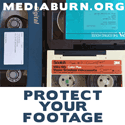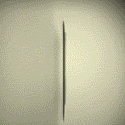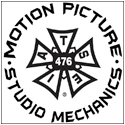
With the world slowly reopening, the film, advertising and TV industries are in search of answers, especially with COVID-19 and demonstrations still ongoing. With economic and political uncertainty pushing insecurities, filmmakers, actors, and other collaborators look to the Illinois Film Office and Chicago Film Office.
This week, the Chicago Film Office website posted their Be Safe. Film and TV Production Guidelines. They recently announced a 10-person or less crew limitation for permits through the Film Office until further notice.
Many of these requirements are set by State and Local authorities, including healthy interactions, safe space and conditions, and operational resilience and monitoring.
Healthy interactions include social distancing, gathering size, protective gear, and hygiene requirements. Ensuring 6-feet between individuals on set, keeping cast and crew adhering to PPE recommendations, and ensuring hygienic practices is a huge part.
Limiting cast and crew on location to no more than 10 individuals, as well as limiting capacity in indoor spaces to 25% or less is also listed in the document. This also includes restricting large crowd scenes until a vaccination is found, and making sure teams are working within their groups (camera, lighting, art, sound, etc.) and minimizing interacting with the main cast and crew whenever possible.
It will be the production’s responsibility to provide PPE for triple the number of cast and crew members, items such as masks, hand sanitizer, and face shields. Productions are also encouraged to require face masks at all times, minus situations with makeup and talent.
Access to running water, soap, paper towels for individual use, and sanitizing stations will be necessary, as cast and crew are encouraged to wash their hands often and avoid touching their faces.
Safe space and conditions such as heightened disinfecting and cleaning standards, as well as crew and cast self-screenings, should happen prior to entering the set. Limiting visitors to essential workers, and keeping sick cast and crew off set, is also suggested.
Designated cleaning services should be scheduled regularly, and deep cleanings every 24 hours. All shared props, tools, equipment are to be sanitized when transferred to a new person, and work groups are encouraged to handle their own gear and equipment.
Posting social distancing standards, CDC guidelines, increasing airflow, and mapping out choke points and dedicated traffic patterns, are also listed.
Multiple monitors for different departments, shifting to gear most compliant with guidelines such as boom mics instead of lav mics, and limited craft services and catering deliveries before crew calls is suggested as well.
ALSO READ: AICP townhall: Crew Safety and Filming (video)
Operational resilience and monitoring means flexible modes like limiting person interactions and utilizing online resources like virtual meeting, notifications, and location scouts, as well as the increased use of walkie talkies on set.
Whenever possible, non-essential crew should work remotely and castings are encouraged to be done through self-taped auditions as well as making any waiting spaces or audition spaces “touch free.” Staggered activities and block shifts allows groups of individuals who typically congregate in one place at one time to safely social distance.
Separate work zones will also limit interactions with others on set. By limiting travel and encouraging private transportation will help ensure proper PPE and social distancing standards. The guidelines suggest limiting passengers in vehicles to two passengers, cleaning high touch, and open windows if possible.
Testing and tracking prior to all principle photography should be in compliance with the CDPH and CDC.
CLICK HERE to view the Be Safe. Film and TV Production Guidelines.
For more information be sure to tune in Thursday, June 11, 2020 from 12-1pm, the Indie Film Town Hall Part 3: Production and New Protocols will be looking to discuss these topics further.
The Moderator will be IFA’s Angie Gaffney, the virtual discussion is available to view via RSVP HERE. Guests this thursday include: Kwame Amoaku of the Chicago Film Office, Charles Andrew Gardner, SAG-AFTRA Chicago Local, Christine Dudley of the Illinois Production Alliance, Brad Matthys, President of IATSE Local 476, and Mike Koon, Director of Sports, Events, and Film Champaign County.

Katharin Mraz is a contributing writer for Reel Chicago and Reel 360
Email katharin@reelchicago.com

















